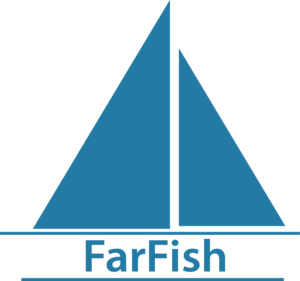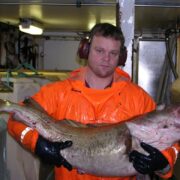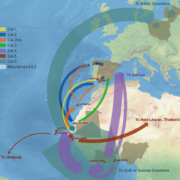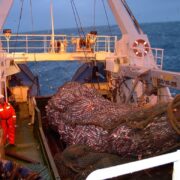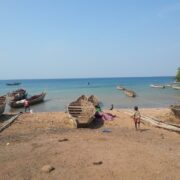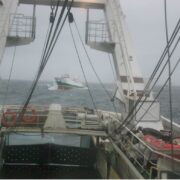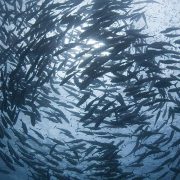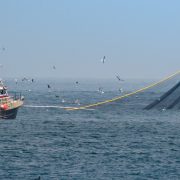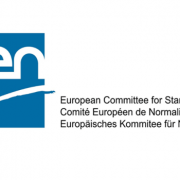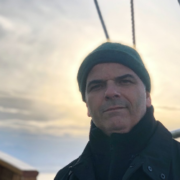The FarFish project is designed around six case study areas in which the European fleet is actively engaged in fishing activities. These are Cape Verde, Mauritania, Senegal, Seychelles, and the international high-seas areas in the southeast and southwest Atlantic. In the context of geographic, economic and cultural diversity, the project focuses on gaining insights into the biological, economic and social aspects of the fisheries. As part of that work, FarFish has published a report that provides a generalised mapping and description of the seafood value chains for the six case studies covered by the project. The report is available here.
The 160-page report provides details on catches, fleets, landings, processing, distribution channels and value chains. A brief summary for each of the case studies is presented below.
Cape Verde
The EU-Cape-Verde SFPA for tuna and tuna-like species entered into force in 2007 and was renewed in 2019. The current agreement will be active until 2024. The fishing industry of Cape Verde is of national importance, with roughly 1,800 vessels (mainly artisanal) and 6,300 fishers in 2016. The national fleet landed roughly 9,500 tonnes in 2016 (of which nearly 60% tuna) – roughly 50% more than the reference catch under the SFPA. Large areas of the Cape Verde EEZ are unexploited by the national fleet, and the SFPA gives purse seiners, longline and pole-and-line vessels from Spain, France and Portugal access to Cape Verdean waters. In the years 2014-2016 the average annual catch under the SFPA was roughly 20% above the reference tonnage (7,285 tonnes), of which skipjack tuna was the most important species (58%) and tuna in total accounted for 70%. Spanish vessels were responsible for 90% of all catch, and purse seiners took roughly 50%. The second most important species was blue shark.
Data from Global Fishing Watch show that there are more vessels from other nations than the EU licensed vessels, especially Japanese showing greater efforts than the Spanish fleet, but also Chinese. Landings to Cape Verde also include landings from other nationalities, but most of the catch under the SFPA seems to find its way into Mindelo, even though large shares are transhipped, especially sharks. Foreign vessels’ landings to Cape Verde exceed the catch under the SFPA. With Mindelo as the main landing facility, which was supported by the Spanish Government for cold storage facilities, two processors receive the main quantities of fish: Frescomar and Antunlo CV. Both are Spanish owned. Frescomar produces canned tuna and mackerel and employs 800 people. Atunlo CV was established in 2015, produces frozen tuna and tuna loins and employs 300 people. Together they account for 80% of Cape Verde’s export of seafood products.
Most of the catch landed in Mindelo goes to export – before or after processing – be it tuna or sharks, which more or less enter the regular value chains for these commodities. Much of the tuna, together with most shark, swordfish and shortfin mako caught within the Cape Verdean EEZ by EU vessels, is landed in Mindelo but exported directly. This is transhipped from Mindelo in big containers, mainly to Vigo (Spain), where swordfish is sold to local companies (Fandicosta, Eduardo Vieira, Hermanos Ibañez).
Some issues regarding management practices, sustainability and food security have been noted by scholars. Among these are a growing concern regarding discards and reporting of shark catches. Moreover, criticism has been raised regarding vessel tracking systems governed by the Cape Verdean authorities, whereas food security – in the sense of product edibility and hygienic standards in processing – seems to be under good control.
Senegal
The current agreement was renewed in 2019 and has a 5-year duration. It only concerns black hake and tuna fishing. The hake fishery remains of minor importance, since the agreement only allows two trawlers to operate in Senegalese waters at the same time, for a total of 2,000 tonnes maximum per year. These operations took place along the edge of the continental shelf, between the isobaths of 100m and 1,000m. Although the fishing pressure from EU vessels on black hake is not very important, the development of the local fishery on this species is causing recent overexploitation. Concerning the black hake, the agreement is fully used by the EU with the Spanish trawlers landing their catch in Spain (Vigo), where hake will join the traditional Spanish sector for local consumption.
About tuna fishing, the three species encountered (yellowfin/listao, skipjack/albacore and bigeye) are fished by tuna fishers, but skipjack tunas are the most targeted. There are eight EU pole-and-line vessels (7 Spanish and 1 French) fishing for tunas in Senegal, for a total of 4,000 tonnes. The utilization rate of the number of vessels according to the agreement is optimal. They are all based in Dakar, where they land their products. The tuna is stored for a part in refrigerated hangars and then shipped to Asia for processing and consumption. Another part provides the only cannery present in Dakar. EU tuna seiners fishing in Senegalese waters are not based in Senegal and do not focus on this fishing area. In fact, only 3,000 tons were fished by 10 boats, for a utilization rate of about 30-35%. These catches are then landed in Abidjan (Ivory Coast) and more rarely in Tema (Ghana). The tunas are directly prepared and canned in the canning factories of Abidjan, for later shipment to Europe.
Mauritania
The EU-Mauritania SFPA agreement follows a suspension of the agreements between July 2014-December 2015. The current agreement entered into force in 2015 and has since then been renewed twice, with duration until November 2021. This agreement concerns several categories, types of fisheries and species. The main categories are small pelagics frozen on board (cat.6: around 90,000 tons in 2017), tuna seiners (Cat.4: around 14,000 tons) and black hake trawlers (Cat 2b: frozen , about 6,000 tons, Cat 2: fresh, about 3,400 tons). Categories 5 (Tuna pole-and-line vessels and longliners: 5,000 tonnes in 2017), 1 (vessels specialized in crustaceans: 1,300 tons) and 3 (fishing for demersal species: 2,600 tons) are less important. Finally, category 7 (small fresh pelagics) is non-existent, despite the authorizations. The exploitation rate of this agreement varies according to the categories. However, it remains low overall (only the hake fishery is at the maximum level). In addition, the fishing effort has globally decreased, except for categories 2 and 3. The reduction of the authorized fishing zone and its limit further and further from the coasts has forced some fleets to give up in this country. In addition, the reduction in stocks for category 6 may be responsible for the decline in catches and fishing effort for this category. The recent increase in fishing pressure on black hakes (with the creation of the new category 2b among other things) results in exploitation that seems unsustainable. For categories 1 and 3, stocks are considered compatible with greater fishing pressure. Yellowfin and bigeye tunas seem overused, while skipjack tunas are underexploited. Catches made by the EU fleet only very rarely end in Mauritania. Most of the catches are integrated in the Gulf of Guinea countries’ sectors or in the EU sectors (Spanish and the Baltic countries’ in particular).
Seychelles
The Seychelles tuna fishery is a principal contributor to national GDP, exports and government revenues, although it generates less employment than its semi-industrial and artisanal fisheries counterparts. Its growth coincided with the delineation of national EEZs in the mid-1980s, with the first EU FPA signed about the same time. In the case of the long-line tuna fishery, just over half (54%) of the 157 vessels authorised to fish in Seychelles waters are flagged to Taiwan, while the nationally-flagged contingent has almost doubled over a decade to reach 29%. The purse seine fleet is much smaller (49 vessels), with the fleet split largely between vessels licenced under the FPA (59%, principally Spanish and French) and the nationally-flagged fleet (27%). Licensing would appear to be a lucrative activity, with FTI (2018) suggesting this brought in around US$9.83 million (just over half – 52% – coming from EU sources) in 2016.
Purse seine catches of yellowfin (despite the recent introduction of IOTC quotas) and skipjack dominate, with Port Victoria acting as the major hub not only for vessels seining in Seychelles waters, but also those seining across the whole WIO region. While a large proportion of this catch (Tall [2016] suggests 85%) is directly transhipped, much of the residual is processed by the Indian Ocean Cannery – owned since 2010 by the Thai multinational Thai Union Frozen Products Co. Ltd – in Port Victoria. Although the cannery has a peak capacity level of around 350 tonnes a day, current production levels are of the order of 85,000 metric tonnes p.a., as a consequence of the 15% reduction in yellowfin catches mandated by the IOTC in 2017.
The processed product, largely canned tuna, is then primarily exported to the EU. In 2016 canned tuna revenues were around 3,500 million Rupiahs (around US$260 million) and accounted for 55% of the country’s total export revenues. The main European markets for Seychelles tuna, which is retailed under the John West and Petit Navire labels, are France (40-45% of tuna exports by value), the UK (25-30%) and Italy (15-20%). Although the Seychelles share of the total EU tuna market is small, nevertheless, it is the major ACP supplier.
Although there are robust management mechanisms in place to offer oversight of the tuna value chain, and product traceability is high, at the harvesting level there remain concerns about the long-term sustainability of the highly migratory IOTC tuna fishery given the level of IUU fishing. Quotas have, as a consequence, been introduced for Indian Ocean yellowfin. This is, however, likely to have minimal impact upon national food security given the fishery is primarily set up to service the export market.
The SW-Atlantic area (FAO Area 41)
The SW-Atlantic area (FAO Area 41) focused on in the FarFish project is recognized as high-seas and the EU mixed fishery in the area is not subjected to any international agreements or governed by any RFMO. The total catch volumes in the area have fluctuated significantly year by year, but the peaked volume was reached at 2.43 million tons in 2015. The target species have primarily been hake, rock-cod, southern cod, red-shrimp and squid caught almost solely by Argentina, Brazil, and Spanish vessels. In recent year there have been fleets from countries such as China, Taiwan and Korea fishing in the area as well. The multi-species fisheries in the SW-Atlantic include nearly one hundred fish species. There are however only four functional groups that represent 76% of the total catches, including medium benthopelagic (length of 30-89 cm), medium demersal (30-89 cm), cephalopods and small pelagics (<30cm). Three major species caught in the area consist of Argentine hake, Argentine red shrimp and Argentine shortfin squid. Discarding occurs in this area and is believed to be quite high. It is estimated that discarding represents 15-25% of the total catch volumes, giving an average rate of 18%. Perch-like species are the most discarded species, accounting for 40% of the total discarding volumes; while shark, ray and invertebrate species account for about 30% in total.
The catches of the EU fleets (including Russia and other former Soviet-Union countries) in the SW-Atlantic have decreased substantially over the last four decades. The EU catches reached a peak at 560 thousand tonnes in 1988 but has experienced significant decline thereafter. The average catch volume of the EU fleet in the last decade (2007-2016) have been around 135 tons per year, of which Spain represents over 70% of the catches. Argentine hake, longtail southern cod, Antarctic rockcod and Argentine shortfin squid are the major species caught by EU fleets in the area, accounting for around 63% of total catches over the last decade. Fishing activities by the EU fleet in the SW-Atlantic high-seas areas (Spanish and UK vessels) are mainly carried out in areas of the continental slope that extends onto the high-seas between the Argentinean EEZ, the Falkland Islands Outer Conservation Zone (FOCZ) and the 300-meter depth contour.
Argentine hake (M. hubbsi) is the major fish species harvested in the SW-Atlantic and is only hake species distributed in the area, embracing southern Brazilian, Argentinean and Uruguayan waters. The species lives in a temperature cold Sub-Antarctic water related to Maldinas/Falkland Current system. The main fishing regions that the Argentine hake is most abundant in are the Argentine-Uruguayan Common Fishing Zone (AUCFZ), Falkland/Malvinas Islands, and Brazilian waters.
Total catches of Argentine hake in the SW-Atlantic (area 41) steadily increased from 25,300 tonnes in 1950 (equivalent to 11 $million) to 180,800 tonnes (762,7 $million) in 1966. Catches were at first all taken by the coastal States, Argentina, Brazil and Uruguay. During the 1960s the Argentine hake began to be exploited by foreign fleets. Following the exceptionally high catches of hake reported in 1995 (942,600 tonnes), catches declined to 311,000 tonnes in 2000. The total catch from this region then increased steadily to 606,800 tonnes in 2004, and then decrease again to 373,300 tonnes in 2014. The discarding of Argentine hake is estimated to be around 11%, consisting mainly of juvenile by-catch.
Before the 1980’s, over 80% of total catches of Argentine hake in the SW-Atlantic was by Soviet Union fleets. Since 1990s, the hake has primarily been caught by coastal nations and Spain. The total landings of Argentine hake in 2016 was 352,000 tonnes; of which 80% was landed by Argentinian fleets, 15% by Spanish vessels, 3% by Uruguay, only 2% by other national fleets (UK, Falkland Isl., and Brazil). Nearly 100% of Argentine hake are caught by industrial vessels, as there is no local artisanal fishing fleet in all three main fishing zones, i.e. the Falkland Island, Argentinean–Uruguayan Common Fishing Zone, and Brazilian water. The Argentine hake and its fisheries is one of the most important demersal fisheries in Latin America, especially for the Argentina, which involves over half of fishing fleets and contribute 40% of fisheries export of the country.
Hake fisheries including Argentine hake represent about 5% of the global white fish production. Argentina, Uruguay, Peru, and Chile are the major production countries and exported around 47% of their production to the EU market. Spain, Italy, Germany, Cameroon, Brazil, and USA are the main markets for hake products. Countries having high trade deficits of hake in 2017 include Spain (517 million USD), Italy (145 million USD), Portugal (58 million USD), France (50 million USD), Netherlands (23 million USD). It implies that these countries are the major market for consuming hake products. The countries having high hake surplus consists of Namibia (277 million USD), Argentina (181 million USD), South Africa (85 million USD), and UK (72 million USD), China (43 million USD), and Chile (40 million USD).
It is generally accepted that the hake resource in the SW-Atlantic is heavily exploited and in danger of collapsing. There are several indicators of concern: 1) Reliance of the fishery in recent years on the youngest fish indicates the decline of the hake stock; 2) A large percent of the 2 year-old fish is immature; ) Lack of older fish in both the population and the catches; 4) Fishing mortality has risen to levels causing growth overfishing, so effectively reducing yield. 5) Qualitative reports of extensive discarding of small 1- and 2-year-old fish owing to present harvesting practices; and 6) Hake is not a species that easily benefits from mesh-size selectivity control. Argentina hake (M. hubbsi) are abundant in three fishing grounds in the SW-Atlantic that are around Falkland/Malvivas Island, Argentina-Uruguay Common Fishing Zone and Brazilian waters. The supply chain of this species is affected by the regulations and governance structure imposed in these areas. It is recommended that an integrated approach among Brazil, Uruguay and Argentina appears to be the best way to achieve proper management of the shared southern stock of M. hubbsi (Vaz-dos-Santos & Schwingel, 2015).
Although fisheries are a very important sector for coastal countries such as Argentina, Brazil and Uruguay, and the SW is one major fishing zone, the domestic consumption represents only a small proportion of the total catch. For instance, national consumption of fish in Argentina represent only 10% of the total catch and only hake represents over 60% of local market. Most landings of Argentine fisheries are exported.
South East Atlantic international waters (FAO area 47)
Although covering a vast area, the non-tuna fisheries in the Southeast Atlantic are very limited. The EU fleet has not reported catches to SEAFO since 2007. From 2000 to 2007 there were sporadic landings of small quantities of armorhead, alfonsino and deep-sea crabs from the EU fleet. Also, other countries’ fleets have shown little activity in the area lately. Quotas are underutilized, indicating that the available fisheries in the area is of marginal profitability. Hence, the little interest also from the EU fleet. This is supported the little interest shown by vessels from other countries, especially with fewer fishing opportunities and lower crew wages.
